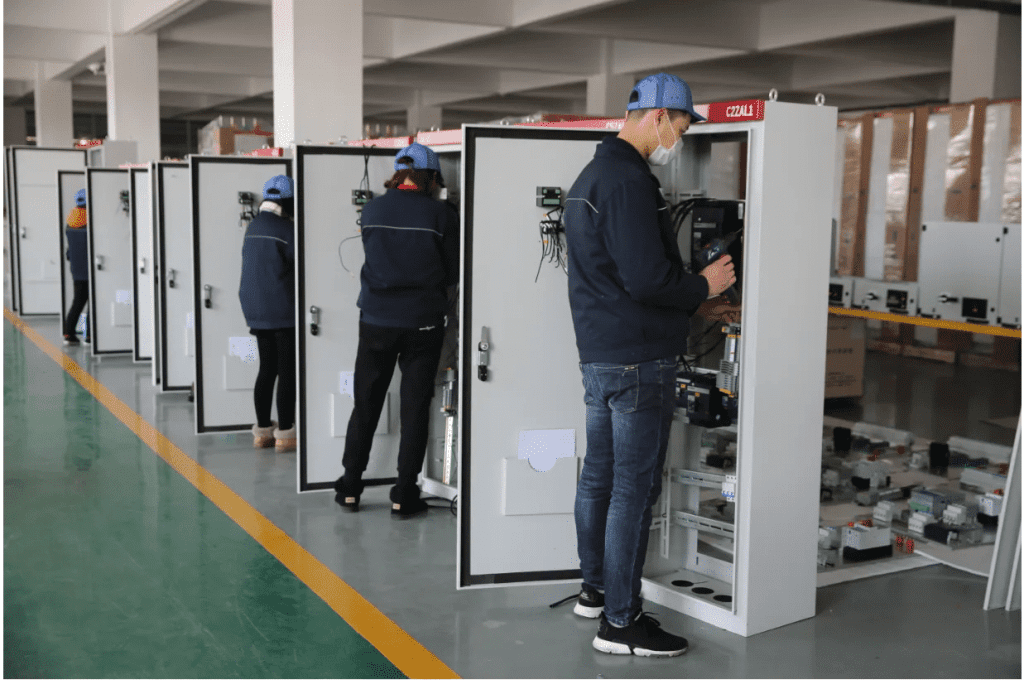
Introduction
High and low voltage distribution cabinets are essential components of electrical systems in industries, buildings, and utilities. They play a crucial role in ensuring safety, efficiency, and longevity. This comprehensive guide to high and low voltage distribution cabinets will cover their core components, roles, and key factors for selection.
Key Components and Their Roles
1. Circuit Breakers: The Safety Guardians
Role: Automatically cut off power during overloads, short circuits, or faults to protect equipment and operators.
Selection Tips:
- Match Voltage Ratings: Ensure the circuit breaker’s voltage rating aligns with your system’s requirements (low or high voltage).
- Choose Breaker Types: Select the appropriate type (e.g., air-insulated, vacuum) based on fault current and speed.
- Prioritize Safety Certifications: Opt for brands with recognized safety certifications (e.g., IEC, UL).
2. Current Transformers (CTs) & Potential Transformers (PTs): Precision Measurement
Role: CTs measure high currents for protection relays, while PTs step down voltages for meters and controls.
Selection Tips:
- Accuracy Class: Ensure the accuracy class (e.g., 0.5S for protection) matches your measurement needs.
- Insulation Levels: Verify that the insulation levels can withstand your system’s voltages.
- Compact Designs: Choose compact designs to save space within the cabinet.
3. Contactors & Relays: Control Masters
Role: Control high-power circuits (contactors) or signal logic (relays) in motors, lighting, etc.
Selection Tips:
- Operational Voltage/Current: Check that the rated operational voltage and current match your system’s requirements.
- Arc-Resistant Materials: Look for contactors and relays made from arc-resistant materials to prevent contact wear.
- Modular Designs: Prefer modular designs for easier maintenance and upgrades.
4. Busbars: The Power Highway
Role: Conduct and distribute electricity within the cabinet efficiently.
Selection Tips:
- Material Choice: Choose between copper and aluminum based on conductivity and cost considerations.
- Ampacity: Ensure the busbar’s ampacity matches your system’s peak load demands.
- Safety Features: Use insulated or enclosed busbars to prevent accidental contact.
5. Protection Relays: The Brain of Safety
Role: Monitor electrical parameters (overcurrent, earth leakage) and trigger circuit breakers.
Selection Tips:
- Relay Types: Select relay types (e.g., overcurrent, differential) aligned with your specific protection needs.
- Response Times: Ensure fast response times for critical applications.
- Communication Protocols: Integrate communication protocols (e.g., Modbus, DNP3) for smart grid compatibility.
Key Considerations for Cabinet Selection
- Environment: Ensure the cabinet has appropriate IP ratings for dust and water resistance, operates within the required temperature range, and complies with hazardous location standards.
- Scalability: Opt for modular designs to accommodate future upgrades or expansions.
- Compliance: Ensure the cabinet adheres to local electrical codes (e.g., ANSI, IEC).
Final Tip: Maintenance Matters
Even the best components can fail without proper upkeep. Schedule regular inspections, test circuit breakers, clean contacts, and update firmware for smart relays to ensure long-term reliability.
